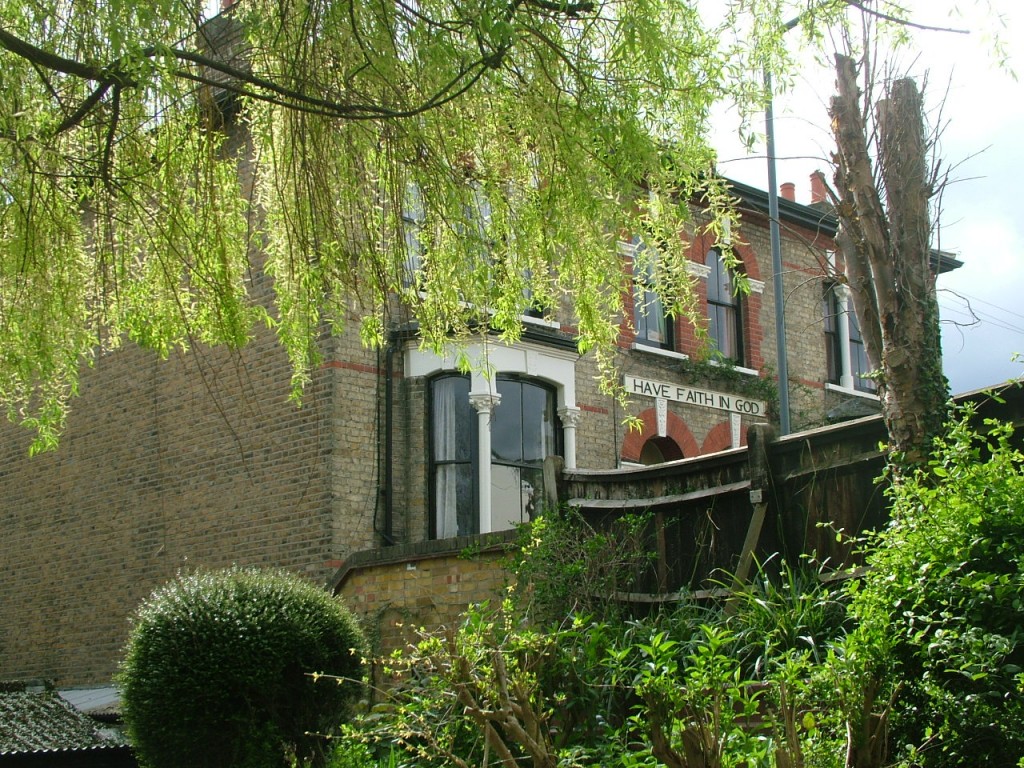In this column I want to revisit the subject of attachment and loss not only in the light of my experience and reflection on what those who have lived at Mill Grove have shared with me, and the work of pioneers such as John Bowlby and D.W. Winnicott, but also using some of the insights and words of Jay Griffiths in her book, Kith: The Riddle of the Childscape (London: Penguin, 2013).
Those of us in the field of child care, child psychology, the residential and foster care of children are indebted to the likes of Bowlby and Winnicott (among many others) for sharpening our awareness of the primal significance of bonds and attachment, and the overwhelming catastrophe that their loss can engender or trigger. Professionals have explored aspects of this over the past 60 years or so and developed vocabularies including ‘transitional objects’, ‘held in a healthy mind’, ‘object relations’, ‘replication of sameness’, ‘defence mechanisms’, and many more. These aid our listening and inform aspects of our responses to those who have experienced, or are experiencing, loss.
The reason Mill Grove was established by my grandfather in 1899 was because he was moved with compassion in his unexpected encounter with an eight-year old girl called Rosie, who was distraught at the death of her mother. (As one who had lost his own mother as a young teenager, he was particularly touched, troubled by her presence and feelings.) And ever since then our home has been a place where we have welcomed and sought to be alongside those children and families suffering loss in one of its various forms. Because we are committed to ‘being there’ for all who have lived with us throughout their lives, I have had the privilege of hearing the recollections and stories of countless ‘members of the family’ who experienced loss as children. This has given me a pretty extensive reservoir to draw from as I seek to distil and learn from the essence of their combined, yet irreducibly, particular narratives.
But it was only on reading Jay Griffiths’s book that I added ‘nest’ to my vocabulary and began to make the connections between elements of these stories that hitherto had remained dissociated in my mind. Part of the argument of Griffiths is that the word ‘kith’ does not simply refer to significant people in a child’s family or community, but to the ‘nest’ in which a child is born. The Anglo-Saxon root of the word is ‘cydd/cyd’ and means ‘home’, ‘country’, ‘region’ or ‘place (compare the German, kunde). So the phrase ‘kith and kin’ is not just a poetic alliterative phrase referring to significant people in a child’s life, but also alludes to the context, the setting, the place, the homeland, the culture, the soil, the dwelling, the community, the natural world in which a child lives. And pace John Clare (1793-1864), the English poet, Jay Griffiths uses the terms ‘nest and ‘nestness’ to describe this aspect of kith.
It follows that when a child is separated from her parents and/or family, she is also separated from her ‘cydd‘, her nest, and the loss that she experiences is a combination of all the people, sights, sounds, smells, objects and associations that combine to make up that nest, both literal and imagined. The term ‘nest’ is beautifully apt, both because it is primarily associated with the original home of the fledgling bird, but also because a nest is made up of a range of objects taken from the local environment. It is, if you like, the embodiment or re-creation of that context.
The purpose of this article is not to detract from the shattering experience of the loss of a mother or father (or family), the significant others in the life of a child, but rather to expand our understanding of the nature of this loss. When Winnicott spelt out the role of transitional space and transitional objects what he wrote was consonant with this understanding of cydd and nest: such objects were valued precisely because they were part of the nest and so when taken into the new strange environment represent some continuity, some connectivity, some relatedness to it in the mind of the estranged child.
With this in mind, isn’t it the case that in the field of social work and social care we have under-estimated the importance of the role of the non-human aspects of the nest which the child loses at the point of separation and transfer to a new home?
A thread in the narratives to which I have been privileged to listen over the past forty years or so is the way in which the details of a place are embedded in the descriptions of experiences positive and negative. People describe the scents, the weather, the sounds, the light, and the texture of the context as if it were still present. A powerful experience is inextricably linked to the setting in which it ‘took place’ (that very phrase is interesting in itself). Poets, musicians and novelists have seen this to the point of taking it as given: a novel sets human stories in specific contexts, and every detail of the context is meticulously chosen and crafted. As I write this, there is in the UK a renewed interest in the writings of Thomas Hardy. The way in which natural landscapes and culture play their part in his novels is epitomised by Egdon Heath (which has been described as one of the main characters in Return of the Native).
When listening actively to the life-stories of people it has become almost second-nature to ask them to fill in such background details from time to time, and in the process the memories and associations seem to be stirred and heightened, and new connections made.
Now there are many implications of this insight and line of thought: we must underline to importance of recording and understanding the cydd of the child. Transitional objects are as vital as Winnicott revealed; photos; visits back to a place with positive associations may play a part in healing. This is also true with regard to places that were the setting for trauma and even abuse (the novel The Shack begins in exactly this way). We can perhaps seek to replicate aspects of cydd in the new setting (though this is fraught with ambiguities and risks); we may use place and context as a way of exploring the dynamics of human attachment and loss; and so on.
 The single thread that I want to trace concerns the essence or nature of the new cydd. As I have listened to a plethora of childhood stories of people who lived at Mill Grove there are aspects of the place (that includes South Woodford, Tiptree in Essex, and holiday haunts particularly in Churston Ferrers and North Wales) that return again and again like old friends, aged oak trees in a familiar landscape.
The single thread that I want to trace concerns the essence or nature of the new cydd. As I have listened to a plethora of childhood stories of people who lived at Mill Grove there are aspects of the place (that includes South Woodford, Tiptree in Essex, and holiday haunts particularly in Churston Ferrers and North Wales) that return again and again like old friends, aged oak trees in a familiar landscape.
Among them are: the lockers in the ground floor of the hall where toys were kept; the window in the corner of this hall where children watched on a Saturday afternoon hoping against hope that a parent would appear approaching the front door; the pear trees in the orchard inextricably linked with tales of scrumping; the damson trees where glue was collected during the summer holidays; the outside toilets; the wash-places; the scrubbed tables at which meals were had; the dormitories and the curtains on summer evenings; the clothes store with is smell of moth balls; the food store with its tea chests, and metal food bins in which rice was kept; the lake at Tiptree; Tiptree Heath; the ducks and their eggs; the horse and the plough; the open-air swimming pool at Maldon; the trig point at the summit of Moel-yr-Gest. You realise that the only way I can halt this avalanche of memories is by an arbitrary and abrupt full stop.
Some of those who lived at Mill Grove have been able to speak of experiencing a considerable measure of healing (forgiveness is one of the words that often creeps in at some stage) since their troubled childhoods, and the primary loss that lies at the very heart of things. I cannot remember a single description of aspects of that healing that are dissociated from place. If there were songs and verses from the Bible that have been constant companions and sources of encouragement, the place where they were learnt (the ‘top hall’ usually) are always mentioned. If there was a caring, empathetic response to inner anger, turmoil and loss, the room or the place where this was experienced comes alive in the telling. It is not long before sounds, colours, smells begin to emerge in the encounter.
And woe betide us if and when we change anything: furniture, the colour of the walls, the shape of a room, a flower-bed in the garden, a clock, a picture…. It is as if things should remain as they were in order to help preserve the sense of security and acceptance that began to grow as small as mustard seeds, “fresh as a leaf” (R. S. Thomas) in the unpromising psychological and emotional crater caused by separation and loss.
I have found other metaphors and symbols helpful in describing the dynamics of loss, and attempts to respond to them, including a harbour, compost heaps, being held, a rock, a village, seasons, rhythms. But when I read the words ‘nest’ and ‘nestness’ at the bottom of page 26 in Kith, I knew that I had been given an idea full of potential in the quest for understanding the unbearable anguish hinted at by the words separation and loss, and also the nature of the response to that anguish.
Unless we can help to provide ‘nestness’ then all our efforts are as wide of the mark as the attempt to rescue a fledgling bird that has fallen out of the nest by placing her in a laboratory or conveyor-belt.


Good to find the time to read this thoughtful piece Keith. I really like the ideas of ‘nest’ and ‘nestness.’ I am sure many of your observations are borne out in research into early relationships between babies and caregivers by developmental psychologists at places like the Anna Freud Centre, Tavistock Centre amongst others. The whole spectrum of sensory experience(s) within relationships influences connection, attachment, neural activity etc The territory of separation and loss is vast and well chartered yet somehow yet to be mastered. I will use the notions of ‘nest’ and ‘nestness’ in my own work and life…